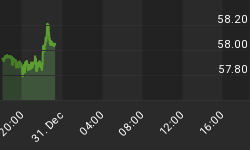President Trump’s tax package has been a real bonanza for investors, with S&P 500 Q2 2018 earnings expected to grow at a rapid clip last seen eight years ago. But there’s a quid pro quo for that: a ballooning federal deficit.
According to the latest Congressional Budget Office report, the US federal deficit is likely to double to $1trillion in 12 months and could approach $2 trillion over the next decade.
Obviously the government will have to cover that gaping hole, and it’s turning to the domestic credit market to do so.
With $1 trillion in new debt coming to the Treasury market, one unlikely player has seized the opportunity to launch a new product that will be tied to the debt. Nasdaq (Nasdaq:NDAQ) has decided to challenge the famous futures dealer CME Group by launching its first Treasury futures, the DV01 Treasury Futures.
The new product will allow investors to hedge the risk and price sensitivity of the cash market of US Treasuries for bonds with 2-year to 30-year maturities. The new product will be available from July 19, 2018 pending regulatory approval.
How Treasury Futures Work
Treasury bond futures are not exactly new on the scene, with CME having launched the first such a product in 1977. But since then the market has grown in leaps and bounds, nearly doubling since 2005 to hit 3.3 million contracts daily avg. volume in 2017.
Treasury futures are derivatives that track the price of underlying Treasury securities. Just as is the case with other futures contracts, Treasury futures allow you to go long or short depending on the direction in which you expect the underlying Treasuries to move.
One big advantage of buying Treasury futures instead of actual Treasury securities is that they employ leverage. For example, if you want to go long $100,000 per amount of Treasuries, you only need to deposit $2,025 in a broker’s margin account and maintain a minimum balance of at least $1,500.
Their main drawback is that unlike actual securities, interest rate futures do not make interest payments, meaning you can’t buy them expecting to receive an income from coupon payments. Related: Tesla’s Model 3 Backlog At 420,000 Orders
Other key features and benefits that the new Nasdaq Treasury futures will offer include:
• They will have clearance by the OCC (The Options Clearing Corporation) and investors will be able to hedge against the price sensitivity of their bond holdings;
• They will be cash settled cash settled On-The-Run(OTR) US Treasury futures contracts calculated as 100 minus the yield (CME Treasury futures are not cash settled). OTR securities offer better liquidity than off-the-run securities and are therefore ideal for broker-dealers and short-term investors who may sell their Treasury securities before maturity;
• Nasdaq plans to move its Fixed Income trading platform to a state-of-the-art matching engine, thus ensuring better business functionality and protocol technologies.
The U.S. economy is quite stable and tends to stay on a strengthening or weakening path for months. Nevertheless, Treasury futures contracts allow traders to profit even from short-term opportunities.
For example, a trader believes that the US economy is improving and 5-year and 10-year Treasury yields are likely to rise. The trader decides to sell 5-Year Treasury notes and a week later his hunches are proven correct after a report comes out that indeed the economy is improving. The 5-Year Treasury note yield rises and the price falls. The trader they buys back the 5-Year Treasury notes at a cheaper price and is able to book a profit.
By Josh Owens for Safehaven.com
More Top Reads From Safehaven.com:

















